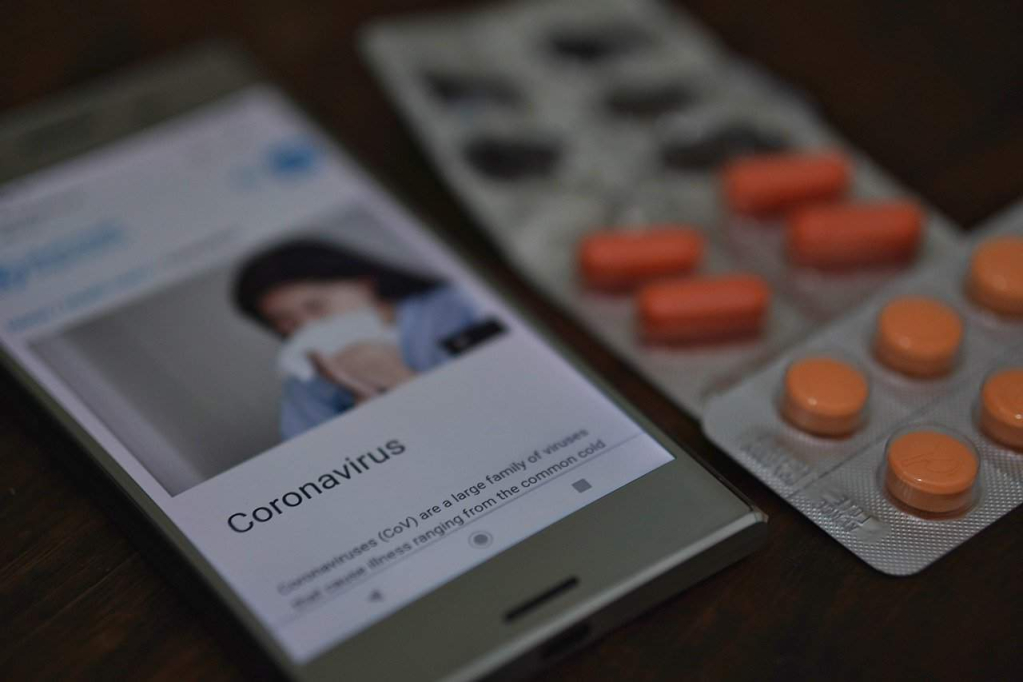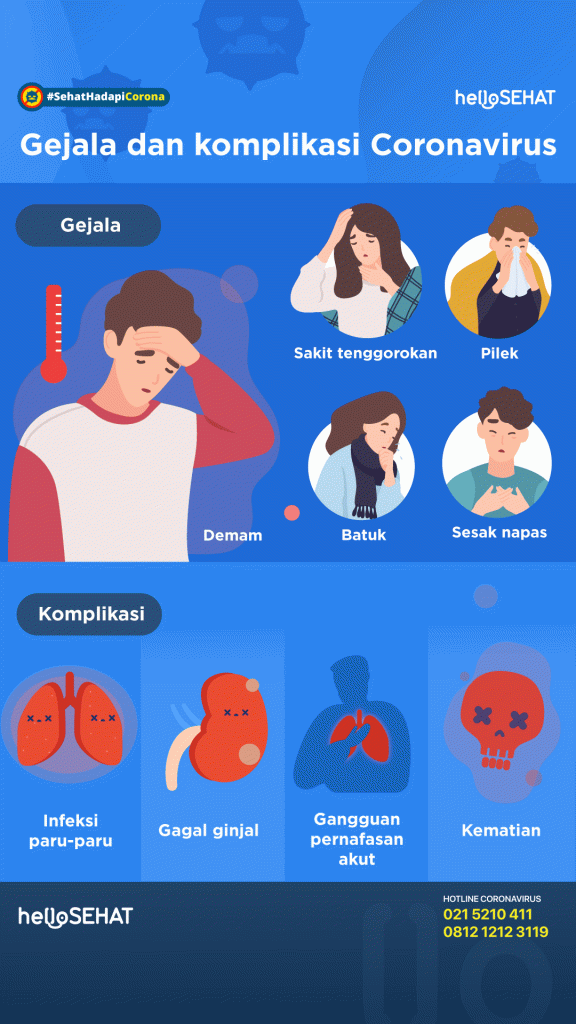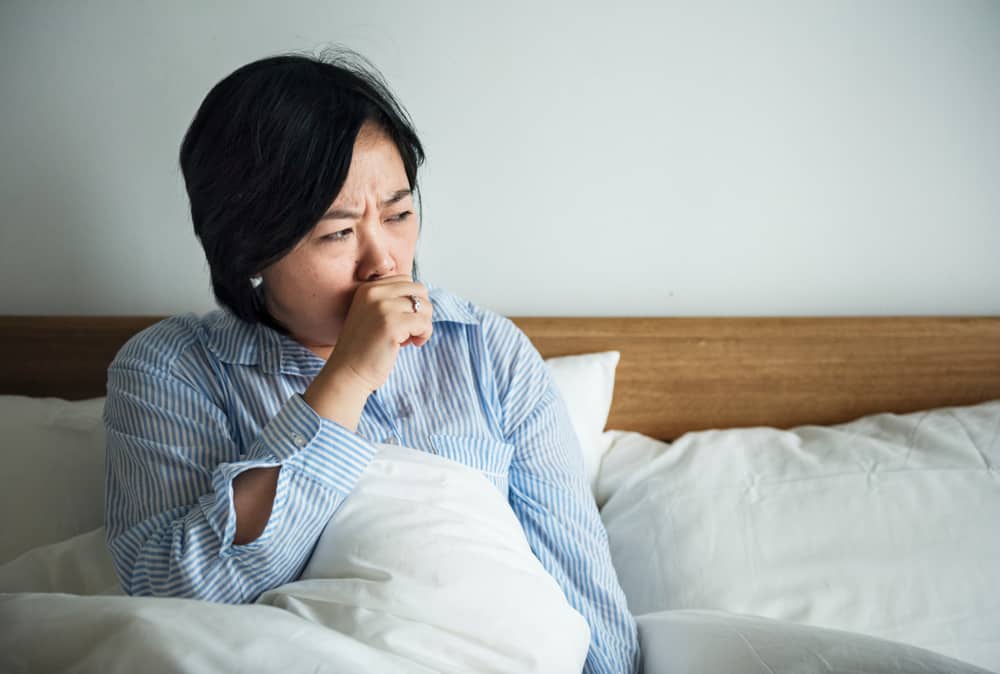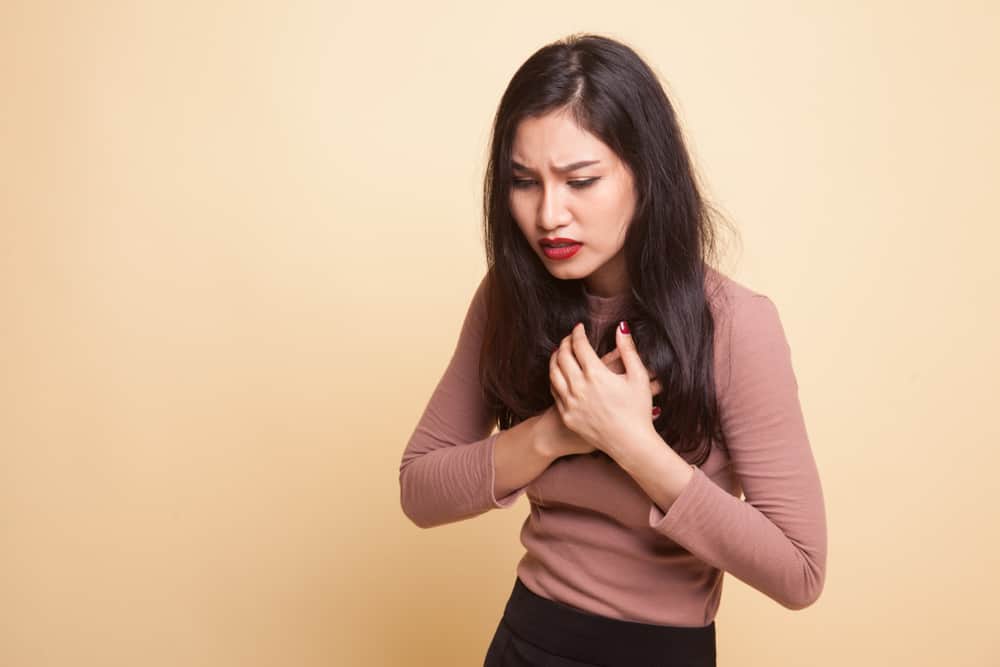Recognize Coronavirus (COVID-19) Symptoms That Need to Be Watched For
Read all articles about coronavirus (COVID-19) here.
Epidemic of a disease COVID-19 infection caused by the SARS-CoV-2 virus has now been declared a pandemic, causing more than one million cases worldwide.
The virus that attacks the respiratory system initially causes only mild symptoms, but in certain cases it can develop serious complications. Here are some of the symptoms caused by the coronavirus, aka COVID-19.
[Review] Days Gone - Nothing Special
Early symptoms of the coronavirus (COVID-19)

According to CDC, the initial symptoms caused by the coronavirus, namely COVID-19, are similar to flu symptoms. Starting from fever, dry cough, sore throat, to runny nose.
However, when these mild symptoms are not treated properly it will cause complications which is quite serious. For example, pneumonia and other severe respiratory infections.
In addition, experts added that symptoms of novel coronavirus infection, especially fever, can appear only 2-14 days after exposure to the virus. These findings are based on the incubation period for MERS-CoV.
The following are some very common early symptoms that indicate a person has contracted the COVID-19 coronavirus, namely:
1. Fever

One of the most common early signs that someone is infected with the coronavirus is fever.
Unlike the symptoms of fever in people who have the common cold, fever in COVID-19 can be seen based on two important factors, such as:
- have a history of traveling from an infected country or city
- ever been in contact with patient positive for COVID-19
These two factors make the symptoms of a cold in the common cold with COVID-19 different.
Meanwhile, the body temperature when a person has a fever can reach 37.2 C. However, when the thermometer reads 38 C it means you have high fever.

Normally, people who are infected with coronavirus or other types of severe viruses make it difficult for them to carry out certain activities.
This means that this viral infection is not just the common cold, so the symptoms of the COVID-19 coronavirus fever are not only marked by ordinary fever, but also the body feels weak and sick. What’s more, fever in COVID-19 cannot be lowered by any drug, especially ibuprofen.
Recently, experts warned that use of ibuprofen in COVID-19 patients it turns out to worsen their condition. Therefore, the fever experienced by people infected with the SARS-CoV-2 virus is recommended to be treated with paracetamol.
The symptoms of the COVID-19 coronavirus, especially fever, may sound less severe. However, you shouldn’t take it for granted. If the body temperature rises to make the body weak and has a history of traveling and having contact with positive patients, consult a doctor immediately.
2. Dry cough

Apart from fever, another symptom of the COVID-19 coronavirus is a dry cough. For some people it may be difficult distinguish between a dry cough and a cough with phlegm.
Generally, a dry cough does not produce mucus or phlegm. According to Subinoy Das, MD, an ENT specialist in Ohio to Health, compared to a dry cough, a cough with phlegm produces mucus or phlegm in the throat.
This condition occurs when a person coughs and feels mucus moving in their bronchi or throat. The sound produced by a dry cough is different from a cough with phlegm. If you have a dry cough, it usually leaves a tingling feeling in the back of your throat.
Even if it doesn’t hurt, the unpleasant sensation can make you cough out loud as you try to get rid of phlegm. As a result, it is not uncommon for this habit to injure the ribs or intercostal muscles.
One thing you need to remember is that dry cough can be a symptom of other diseases, not only the COVID-19 coronavirus. For example, asthma, allergies, bronchitis, to the common cold.
If the cough does not go away despite trying to be treated and is accompanied by fever, please consult a doctor or undergo a COVID-19 test.
3. Shortness of breath

Hard to breathe is another common symptom that can indicate a person has the COVID-19 coronavirus.
Reporting from American Lung Association, shortness of breath or difficulty breathing has a sensation like not getting enough air or in the medical world it is known as dyspnea.
Those of you who have difficulty breathing may experience chest pressure or a feeling of choking.
In fact, there are several diseases that have the same symptoms as COVID-19. In most diseases, shortness of breath is caused by conditions of the heart and lungs.

These two organs are involved in carrying oxygen to the body and removing carbon dioxide in it. This condition often occurs in several diseases, such as:
- asthma
- allergic reactions
- heart attack and heart failure
- abnormal heart rate
- pneumonia
There are several things you can do to see if you experience shortness of breath or not. For example, paying attention to how well you breathe while talking or when sitting or watching TV feel you are not getting enough air so you feel tight.
If you feel short of breath and feel this is part of the symptoms of the COVID-19 coronavirus, try to really pay attention to the signs.
The reason is, right now it’s not a good idea to go to the hospital when you are not in an emergency situation because you are at risk of being infected with the virus there.
If you have trouble breathing but still feel fine, try calling your doctor at home or consulting via an online app.
Generally, a person can qualify for a COVID-19 test if they experience other symptoms related to respiratory problems, such as fever, dry cough and sore throat.
What’s more, when you are in an area where the number of cases of viral infection is quite high or have had direct contact with positive patients.

Another symptom of the COVID-19 coronavirus
The three initial symptoms above can indeed be diagnosed as other diseases, not only the COVID-19 coronavirus. However, you also should not underestimate some of the signs above because when treated properly it can actually develop quite serious complications.
Some of the symptoms below may occur in only a few people compared to the signs above, but can be categorized as COVID-19:
Less sense of smell
Have you ever had a runny nose and runny nose, decreased your ability to sense of smell, aka difficult to detect odors? Recently, reduced sense of smell or anosmia is mentioned as one of the symptoms of the COVID-19 coronavirus.
This statement is not so surprising because viral infection is the main cause of loss of the sense of smell, including the SARS-CoV-2 virus.
In addition, this condition also helps doctors to diagnose patients who do not have symptoms related to COVID-19 and unknowingly pass it on to other people.

British experts told Harvard Health Publishing that two out of three cases of COVID-19 in Germany have been confirmed as having difficulty smelling something.
In addition, the same incident occurred in South Korea, where 30% of people who had mild symptoms and were positive for COVID-19 experienced anosmia as the main symptom.
However, the loss of the ability to detect odors may not be a symptom of the COVID-19 coronavirus. There are several other diseases that cause anosmia, such as allergies.
Until now, experts are trying to conduct research to see what the relationship between anosmia and COVID-19 disease is. This aims to make it easier for doctors to distinguish the loss of the ability to smell due to COVID-19 from allergies.

Diarrhea
In fact, the symptoms of the COVID-19 coronavirus characterized by diarrhea weren’t so common initially until research from China debunked the statement.
About a quarter of COVID-19 patients followed the study and indicated that they were have diarrhea with mild symptoms.
Most of these patients end up seeking medical care later than those with respiratory symptoms. As a result, they may not be aware that they have infected another person because they feel their symptoms are not related to SARS-CoV-2 infection.
Experts also emphasize that there are many diseases that have similarities with COVID-19 and can trigger indigestion. For example, diarrhea, nausea, vomiting, or drastically reduced appetite may not come from this new virus.
However, it doesn’t hurt to self-quarantine if you have diarrhea. This is even more so when you are most likely in contact with a COVID-19 positive patient.
Coronavirus COVID-19 can be transmitted without symptoms

So, what about people who don’t experience symptoms related to the COVID-19 coronavirus but can still pass it on to other people?
In fact, this condition is precisely what needs full attention because it is one of the reasons why the spread of the virus occurs so rapidly and in large numbers.
Asymptomatic transmission or asymptomatic does not only occur in China, but occurs in almost most of the infected countries. In fact, this one transmission accounted for about 85% of all infections when the outbreak had just started.
However, this may be due to the incubation period. As a result, those who feel well when they have just been infected do not need to self-isolate, so the rate of transmission increases rapidly.
Therefore, when you do not experience symptoms related to coronavirus, it does not mean that the body is immune to infection with the virus. What’s more, if you have had direct contact with a positive patient with COVID-19 or are in an area with a high number of infection cases.
In order to suppress the transmission of the virus that can be caused by those who are asymptomatic, physical distancing also needs to be implemented.
When should I see a doctor?

If you experience symptoms of the COVID-19 coronavirus or have had contact with someone who has been diagnosed with this virus, immediately contact the nearest doctor or clinic.
Don’t forget to tell them about the symptoms and possible transmission before going there. Try as much as possible to keep a distance from positive patients or do physical distancing.
If you have symptoms of COVID-19 that include an emergency, such as difficulty breathing, confusion, and lips and naturally turn blue, seek treatment immediately.
Even if you have respiratory problems, but have not or have never been in an infected area, still contact your doctor for remote consultation.
Try to tell your doctor if you have certain chronic diseases, such as heart disease or lung disease.
The symptoms of the COVID-19 coronavirus are similar to those of other diseases, especially the common cold. However, that does not mean that you will not self-diagnose the disease.
Keep looking for drugs that can relieve these symptoms and if necessary self-quarantine so as not to pass it on to others. Don’t forget to always do COVID-19 prevention efforts although not showing any symptoms.